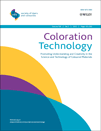
COLORATION TECHNOLOGY
Scope & Guideline
Illuminating the Path of Color Chemistry
Introduction
Aims and Scopes
- Dyeing Techniques and Innovations:
Research on various dyeing processes including conventional and eco-friendly methods, focusing on optimization and innovations to enhance dye uptake and fastness properties. - Color Measurement and Analysis:
Studies involving the measurement and analysis of color properties in textiles, including colorimetric methods, color difference detection algorithms, and the development of predictive models for color formulation. - Sustainable and Eco-friendly Practices:
Emphasis on sustainable approaches in dyeing and coloration, including the use of natural dyes, biodegradable materials, and waste reduction techniques. - Material Science and Functionalization:
Research on the development of new materials and functionalization techniques, including the use of nanoparticles and polymer modifications to enhance the properties of dyed textiles. - Computational Modeling and Simulation:
Utilization of computational methods for predicting dye behavior, color properties, and the design of dyeing processes, including machine learning and optimization techniques. - Applications of Coloration Technologies:
Exploration of practical applications of coloration technologies in various sectors, including textiles, food packaging, and biomedical fields.
Trending and Emerging
- Sustainable and Natural Dyes:
There is a growing trend towards the exploration and application of natural dyes and sustainable dyeing methods, driven by environmental concerns and the demand for eco-friendly textile solutions. - Advanced Computational Techniques:
The use of machine learning, artificial intelligence, and computational modeling to optimize dyeing processes and predict color outcomes is increasingly prominent, reflecting a shift towards data-driven approaches. - Functionalization of Textiles:
Research into the functionalization of textiles, such as antibacterial properties and UV protection through dyeing processes, is gaining traction as the industry seeks to enhance the performance of textiles. - Wastewater Treatment and Dye Removal Technologies:
Innovative methods for treating dye wastewater and removing colorants from water are emerging as crucial areas of research, highlighting the journal's commitment to addressing environmental impacts. - Integration of Color Technology in Smart Textiles:
The incorporation of coloration technology into smart textiles and wearable technologies is an emerging focus, reflecting the intersection of textiles with electronics and functionality.
Declining or Waning
- Traditional Dyeing Methods:
Research focused on historical or traditional dyeing methods has decreased, possibly overshadowed by the rising interest in modern, sustainable, and innovative dyeing techniques. - Non-Eco-friendly Dyeing Processes:
There has been a noticeable reduction in studies involving harmful or non-sustainable dyeing processes, as the field moves towards greener alternatives. - Basic Color Theory Applications:
The application of basic color theory in practical dyeing processes has seen a decline, likely due to the increased focus on advanced computational and analytical methods. - Conventional Colorants and Dyes:
Research surrounding conventional colorants, especially those that are synthetic and non-biodegradable, appears to be waning as interest shifts towards natural and sustainable alternatives.
Similar Journals

TRANSACTIONS OF THE INDIAN INSTITUTE OF METALS
Advancing metallurgy through innovative research.TRANSACTIONS OF THE INDIAN INSTITUTE OF METALS is a premier journal published by Springer India, dedicated to the field of metallurgy and materials science. Established in 1969, this journal serves as a vital platform for researchers and professionals to disseminate their findings on metals and alloys, showcasing innovative studies and experimental techniques. With an impressive impact factor and categorized in the Q2 quartile for metals and alloys as of 2023, it ranks 70 out of 176 in its field according to Scopus, placing it in the 60th percentile. The journal maintains a robust reputation for fostering academic excellence, thus attracting contributions from both established and emerging scholars. Though not an open access publication, its well-curated content remains a crucial resource for advancing knowledge and technology in metallurgy. The journal's extensive operational history, particularly during notable converged years, underscores its enduring significance in the scientific community.

Industria Textila
Pioneering Innovations in Textile Science and EngineeringIndustria Textila is a prominent academic journal dedicated to advancing knowledge in the fields of textile science, engineering, and related disciplines. Published by the Institutul Național de Cercetare-Dezvoltare Textile Pielarie din București, Romania, this journal has been a key player in the textile research community since its inception in 1994, with a converged publication timeline extending to 2024. With its significant contributions, Industria Textila currently holds a Q3 ranking in various categories, including Business, Management and Accounting, Environmental Science, and Materials Science. Despite its more accessible open access status, researchers are drawn to its rigorous scientific standards and interdisciplinary approach, addressing critical issues in textiles such as sustainability and innovation. The journal's commitment to enhancing understanding of interrelated sectors makes it an invaluable resource for academics, professionals, and students aiming to contribute to the evolving landscape of textile research. With a focus on both applied and theoretical aspects, Industria Textila seeks to bridge gaps between research findings and practical applications, thereby inspiring advancements in the field.

Jordan Journal of Mechanical and Industrial Engineering
Exploring the Frontiers of Mechanical and Industrial EngineeringThe Jordan Journal of Mechanical and Industrial Engineering, published by HASHEMITE UNIVERSITY, is a distinguished platform for disseminating research in the fields of mechanical and industrial engineering. Established in 2009, this journal has made significant strides in contributing to the body of knowledge within its scope, as evidenced by its current Q3 ranking in both Industrial and Manufacturing Engineering and Mechanical Engineering categories for 2023. Researchers and practitioners alike can benefit from the journal's focus on contemporary developments, innovative methodologies, and empirical investigations that address real-world challenges. While the journal operates under a traditional publishing model, it remains committed to enhancing the dissemination of knowledge through accessible research findings. Scholars will find value in the journal’s insights, as it garners attention within Scopus, ranking as #195 in Industrial and Manufacturing Engineering and #380 in Mechanical Engineering. With its address located at the Deanship of Academic Research & Graduate Studies, PO Box 330127, Zarka, Jordan, the journal serves as a vital resource for the academic community seeking to advance their expertise in engineering disciplines.
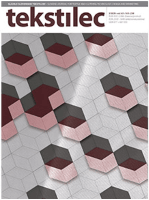
Tekstilec
Empowering scholars through open access to textile advancements.Tekstilec, an esteemed journal published by University of Ljubljana, Slovenia, has been a prominent platform in the fields of textiles, engineering, and industrial management since its establishment in 1989. With an Open Access model since 2000, the journal ensures that scholarly research is accessible to a global audience, fostering the dissemination of knowledge across various disciplines. While its impact factor remains unlisted, Tekstilec holds respectable rankings within its categorized quartiles, featuring a 2023 Q4 ranking in Business and International Management and Q3 rankings in multiple engineering and material science categories. This positions the journal as a vital resource for researchers, professionals, and students seeking insights into textiles and their multidisciplinary applications. With a commitment to advancing knowledge in its scope, Tekstilec invites contributions that explore innovative research and practical developments, encouraging collaboration within the global academic community.
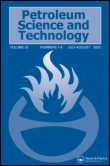
PETROLEUM SCIENCE AND TECHNOLOGY
Innovating solutions for a sustainable energy future.PETROLEUM SCIENCE AND TECHNOLOGY, published by Taylor & Francis Inc, is a pivotal journal dedicated to advancing the multidisciplinary field of petroleum engineering and related technologies. With an ISSN of 1091-6466 and an E-ISSN of 1532-2459, this journal serves as a vital platform for disseminating research in areas ranging from geotechnical engineering to energy technology. As of 2023, it is recognized in the Q3 quartile across several categories, including Chemical Engineering and Fuel Technology, signifying its respectable standing within the academic community. With a convergence timeline from 1997 to 2024, the journal continuously addresses crucial issues in the energy sector, making it essential reading for researchers, industry professionals, and policy-makers alike. Although not an open access journal, its rigorous peer-reviewed articles contribute significantly to the advancement of knowledge and innovation within these fields, reflecting the journal's commitment to promoting scientific understanding and practical applications.
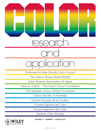
COLOR RESEARCH AND APPLICATION
Illuminating Innovations in Color Science.COLOR RESEARCH AND APPLICATION is an esteemed journal dedicated to the exploration of color science, including its applications in various fields such as chemistry, human factors, and ergonomics. Published by WILEY, this journal has been a vital resource for both researchers and professionals since its inception in 1976, with a commitment to disseminating cutting-edge research and innovative methodologies. With an impact factor that reflects its significance in the academic community, COLOR RESEARCH AND APPLICATION ranks in the Q2 quartile across multiple categories, including Chemical Engineering, General Chemistry, and Human Factors and Ergonomics, illustrating its interdisciplinary importance. As a premier publication, it serves to bridge the gap between theoretical developments and practical applications of color science, thereby catering to a diverse readership that includes students, industry practitioners, and esteemed researchers. The journal offers a wealth of articles that not only enrich the understanding of color but also contribute to advancements in technology and human experience, ensuring its pivotal role in shaping future developments in the field.

FIBERS AND POLYMERS
Exploring the Future of Fibers and PolymersFIBERS AND POLYMERS is a prestigious scholarly journal published by the Korean Fiber Society, specializing in the fields of Chemical Engineering, Chemistry, and Polymer Science. Since its inception in 2000, the journal has provided a dynamic platform for researchers and professionals to disseminate cutting-edge findings and innovative methodologies related to fibers, polymers, and their diverse applications. With its Q2 category ranking across multiple disciplines in 2023 and a commendable standing in Scopus rankings—ranking #183 in General Chemistry and #127 in General Chemical Engineering—it is well-regarded within the academic community. The journal’s commitment to quality research is further underscored by its comprehensive coverage of technological advancements and theoretical developments relevant to both industry and academia. Access to published articles may vary, and authors are encouraged to submit original research to contribute to this evolving field. Join the community shaping the future of materials science through FIBERS AND POLYMERS.
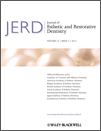
Journal of Esthetic and Restorative Dentistry
Shaping the future of dental care with cutting-edge insights.Journal of Esthetic and Restorative Dentistry is a premier publication in the field of dentistry, focusing on the latest advancements in esthetic and restorative techniques. Published by WILEY, this esteemed journal has been pivotal in disseminating high-quality research since its inception in 1988. With an impressive impact factor, the journal ranks in the Q1 quartile in the field of Dentistry and is recognized among the top 13 out of 132 journals in General Dentistry, situating it in the 90th percentile of scholarly impact according to Scopus rankings. The journal offers a rich platform for disseminating original research, comprehensive reviews, and cutting-edge case studies, making it an invaluable resource for researchers, dental professionals, and students committed to enhancing dental care practices. Although not open access, it provides various subscription models to ensure accessibility for institutions and individuals alike. Located in Hoboken, New Jersey, the Journal of Esthetic and Restorative Dentistry continues to shape the future of dental aesthetics through rigorous research and collaborative scholarship.
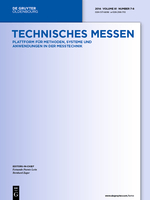
tm-Technisches Messen
Fostering Collaboration in Engineering Excellencetm-Technisches Messen is a reputable academic journal published by WALTER DE GRUYTER GMBH, focusing on the field of engineering, specifically in Electrical and Electronic Engineering and Instrumentation. With a rich history dating back to 1931, this journal serves as a critical platform for disseminating research, innovations, and developments relevant to measurement and instrumentation technologies. Despite its current quartile rankings of Q3 in Electrical and Electronic Engineering and Q4 in Instrumentation for 2023, the journal continues to attract submissions from leading researchers, offering insights that drive advancements within these fields. Researchers and practitioners can access a wealth of knowledge through this publication, fostering collaboration and sparking new ideas. Located in Berlin, Germany, the journal operates without an open-access model, making it essential for universities and institutions to play an integral role in supporting their library access to this valuable resource. As the journal continues to evolve through 2024 and beyond, it remains a significant contributor to the global discourse in measurement technologies, making it a must-read for anyone involved in these dynamic areas of study.

Metals
Connecting researchers with cutting-edge findings in metallurgy.Metals is an esteemed open access journal published by MDPI, focusing on the diverse field of metallurgical science and its applications. Since its inception in 2011, the journal has provided a platform for the dissemination of high-quality research regarding the behavior, processing, and properties of metals and alloys. With an E-ISSN of 2075-4701, it has quickly established itself within the scientific community, achieving a remarkable Q1 ranking in the realm of Metals and Alloys and a Q2 rank in general Materials Science as of 2023. The journal is situated in Switzerland and is committed to the principles of open access, ensuring that findings are accessible to a broad audience without subscription barriers. With its notable impact factor and a strong emphasis on innovative research, Metals serves as an essential resource for researchers, professionals, and students seeking to advance their knowledge and understanding in the ever-evolving landscape of metallurgical studies.